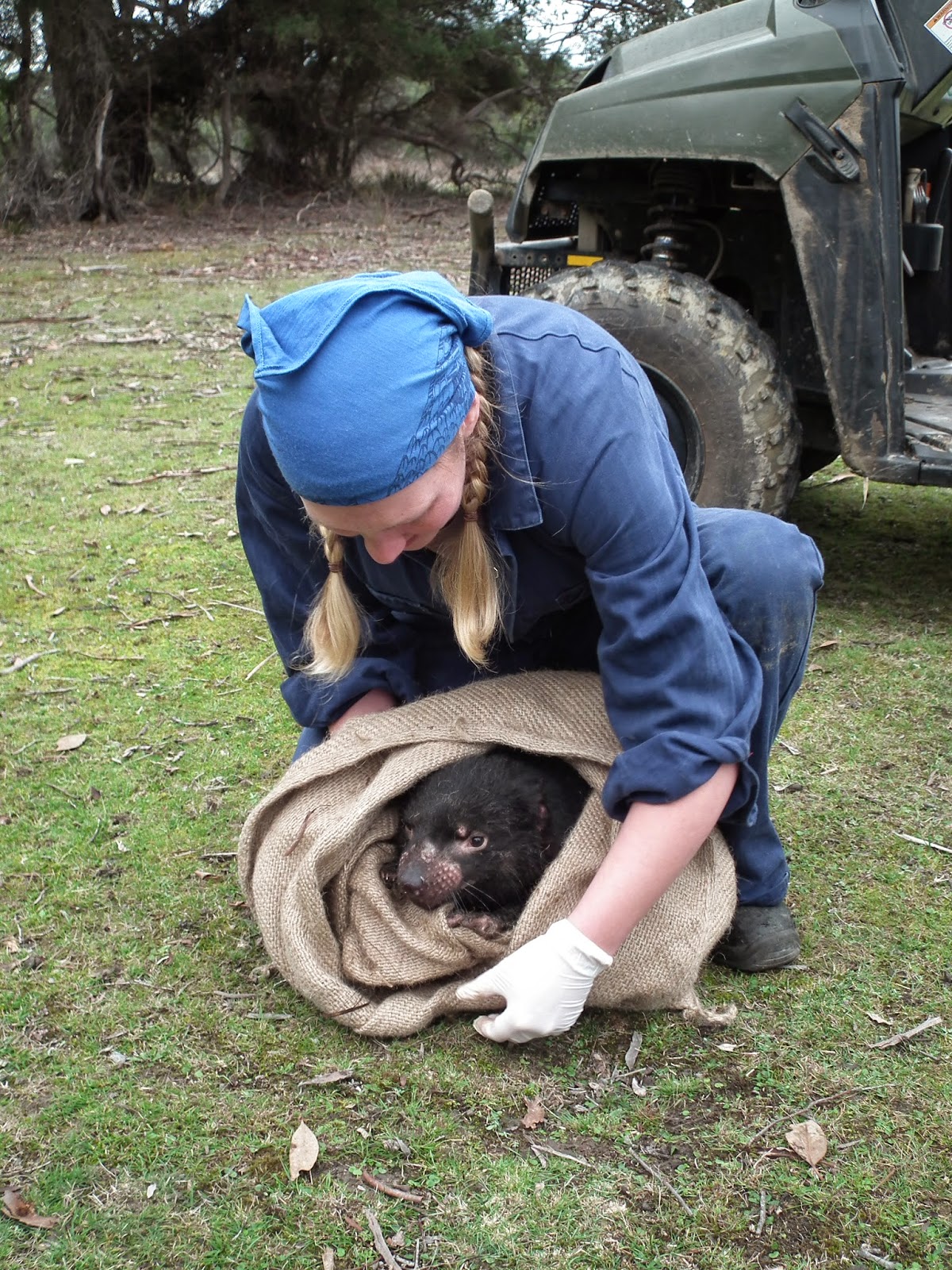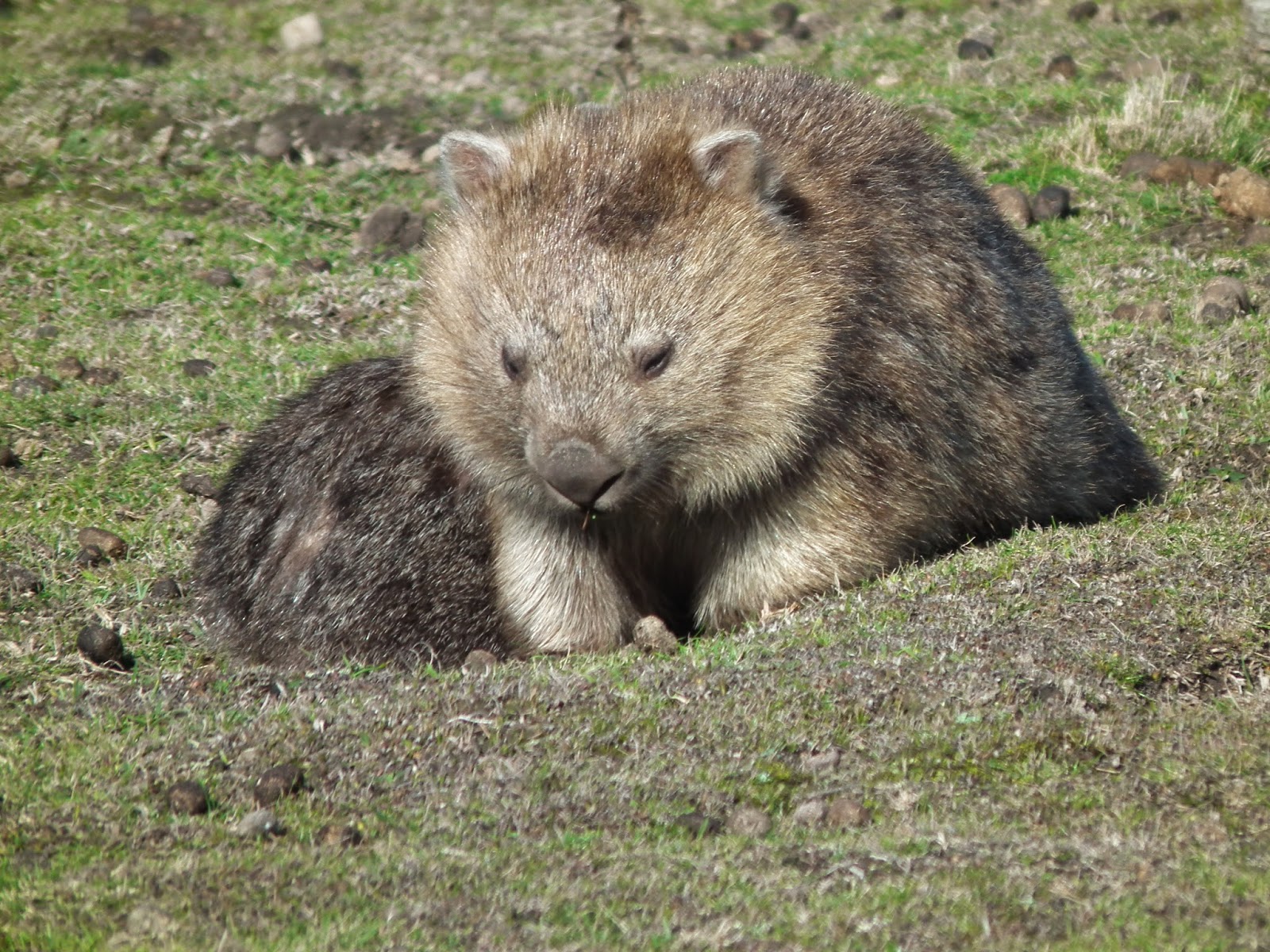Kit is home, after all her busyness!
She is very tired. Most of today, and yesterday, were spent catching up on sleep.
Right now, she should be working on her grant application assignment, but she doesn't want to. It's not due until the 11th of August. There's still time, right? How long can it take to write up a grant application?
Side note: Face was just downstairs cooking Kit's dinner. He has super cool headphones that are wireless, so while he's doing stuff in the kitchen, he generally has music and such playing through them. Being the super geek that he is, while downstairs he was listening to a commentary of an on-line card game. Neeeeeeeerd. But he foolishly left his computer unlocked and vulnerable, so Kit paused the nerdy on-line card game and belted Justin Bieber out the headphones instead.
Oh Kit, you little scamp!
She doesn't get dinner now.
Back to business.
Kit was on (the extremely beautiful) Maria Island from the 16th until the 20th of July, with some members of the Save the Tasmanian Devil Program (STDP) and a couple of fellow volunteers.
It was a week of hard work and long hours, but it was extraordinary being so close to the wild devils. Devils have got a really bad reputation, with snarling and growling and biting and general nasty behaviour expected (thanks for that, Loony Toons). Captive devils do habituate to humans, and once they've lost their fear of people they'll sometimes challenge them like they would another devil. Most of the captive devils Kit has worked with were still pretty keen on keeping their distance though. The devils on Maria Island were a completely different story. They froze up as soon as they were handled and were as timid as anything.
For example: This is Guernsey.
She's been released from the sack at this point. But we had a hard time getting her to leave. She was doing a pretty good job of pretending to be invisible. After a while she realised that she was free and took off into the bush very quickly.
We caught 34 devils in total - including 3 island-born devils which hadn't been caught before. Very exciting! They were micro-chipped, had an ear biopsy and blood taken (an honours project at the University of Sydney will be using ear biopsies to look at Maria Island devil lineage), basic information such as weight, canine length and sex were recorded, and then they were named!
Tiritiri Matangi (♀), Canary (♀), and Rottness (♂).
There's an island theme going for the 2013 born devils. Others in that cohort include Maria (of course), Caledonia, Guernsey, Tahiti, Statia, Rapa Nui, Ral Kurru, Aotearoa, and Macca. Macca might be short for Macquarie? Otherwise his name is just weird.
Kit chose the name Canary. What a perfect name for a devil! Or so Kit thinks. That's Canary in the picture above.
Canary and Tiritiri - as well as many of the other island-born devils caught - had pouch young!
While female devils don't generally breed until they're around 2 years of age, 1 year old devils have been seen with pouch young before - when they're in areas of low devil density.
The pouch young were at a range of ages. Some looked like squirmy pink jellybeans and some were distinct little devils.
Endangered animals breeding! We love it!!
Along with the devils, Maria Island has a few other endangered species introduced, such as Cape Barren geese and Flinders Island wombats. There's a few macropods as well, including forester kangaroos, red-necked wallabies and pademelons.
The next part of Kit's project will involve dietary analysis from the scats collected, so she can determine which of these delicious critters the devils have been eating.
After the Maria Island trip, Kit spent the entire week locked up in the UTAS labs drying and grinding up devil poop. It wasn't pleasant. Devil poop smells bad. Kit smelt bad. Many the showers were had.
Once all the devil poop had been pulverised, it was packed on ice and flown with Kit to the University of Queensland, where there's an endocrinology laboratory. Kit spent a week up there learning all about endocrinology and hormone assays.
Of the 121 poop samples Kit took with her, 33 didn't have enough faecal material in them for hormone extraction. At least .1g of poop dust was needed, but as devils eat eveeeeeerything, a lot of what came out the other end were essentially hairballs. Good for diet analysis, not good for hormone analysis. There was also a few other interesting tidbits that came out.
Oh, hullo there MASSIVE TALON/CLAW AND JAGGED BITS OF BONE.
Gosh damn devils are tough.
Continuing with the endocrinology side of things, methanol was added to her devil poop samples (corticosterone - the steroid hormone Kit is interested in - dissolves in methanol) and they were placed on a rotator overnight. In the morning the samples were run through a centrifuge and then the liquid decanted. Leaving Kit with...
Extract of Tasmanian devil poop!
Endocrinology is hard. The techniques (especially correct pipetting) are tricky to learn, and there's approximately a zillion steps in which you can do something wrong and screw up the entire assay.
Scieeeeeeeeeeeence!
Standard curves, extractions, serial dilutions, parallelisms. Kit still hasn't completely gotten her head around most of it. Kit spent a majority of the week learning the necessary techniques and attempting to de-fuddle her poor confused brain. Suddenly chemistry and maths when Kit hasn't dealt with any of that since first year! She also had a go at running an assay.
Which failed.
Well, it didn't fail. It did work, and in the words of her instructor it was "not bad" for a first assay.
But there's the 'not bad' which means 'hey! Pretty good! Not bad at all!' and then there's the 'not bad' with a long pause between the two words. Which means 'look, I don't want to hurt your feelings, but it's not good'. Kit's assay tended towards the latter.
Kit's pipetting needs a lot more work before she can go around endocrine-ing stuff. Her covariance of variation (CV) was huge for her repeated samples (good science = same sample more than once to check for error!), and her standard curve was... Whack. We don't like whack. In science, un-whack standard curves are preferred.
As said, it's tricky. But Kit tried, and she learnt a lot in her week there. So the samples shall be analysed by the Science Lady who instructed her, and she can expect the results in a fortnight! Which then leaves two and a half months to analyse everything and write it all up!
... Wah.
To summarise! Maria Island was awesome. Would go again out of 10. Endocrinology is hard. Devils eat all of everything. Most importantly - to all the baby scientists out there: GUYS. PRACTICE YOUR PIPETTING. PRACTICE IT, GUYS.
Kit will now play herself out with some more photos! Because she didn't want to clog up the rest of the post with scenery photos, but Maria Island is just too gosh darn beautiful not to share.
Much love. xx
Super Devil! Da na nah na!
There was a farming family on Maria Island until the 1970s-ish. Who Kit assumes were the French's, as the farm house and shearing shed they left behind is known as French's Farm.
Run down stock yards make excellent photos!
Devil paws are adorable. Amiright?!
















































